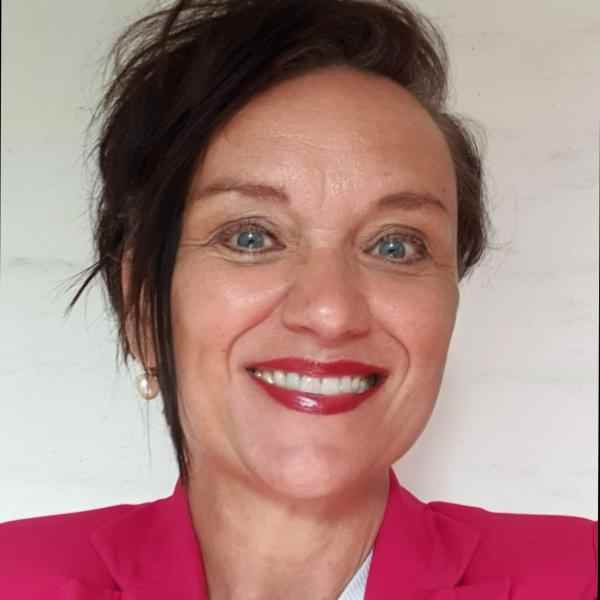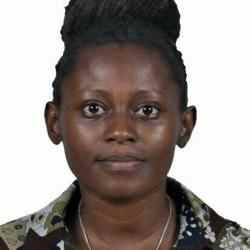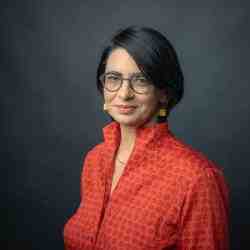Introduction
Dorien Beurskens has developed an affordable way to provide vocational education and training to young people in Southern Africa. She has established training centers that are both learning spaces for students and business hubs for entrepreneurs in the community. Dorien has developed a creative model in which the centers’ spaces, equipment and the Young Africa brand are rented to local entrepreneurs who, in turn, train students in their respective fields.
The New Idea
Dorien founded Young Africa (YA) to empower underprivileged youth in Southern Africa with marketable skills so that they can pursue self-employment or access opportunities in the job market. She has established YA centers in Zimbabwe and Mozambique that offer vocational education and training programs at affordable prices and serve as business and social hubs for the community.
The mutually beneficial relationship among the students, the entrepreneurs and YA is central to Dorien’s model. The centers’ spaces, capital equipment, and the YA brand are rented out to local entrepreneurs, who use them to sell products and provide services to the community. In addition, the entrepreneurs are responsible for training students in their respective fields. Since the training programs are predominantly practical in nature, the students have the opportunity to “learn on the job” through apprenticeships, and the entrepreneurs have access to skilled labor and a pool of potential employees for the future. In effect, YA licenses out various skills training departments to local entrepreneurs, which allows it to cover its costs and boost the efforts of local entrepreneurs. The entrepreneurs also have access to business facilities in the YA centers. These resources elevate the otherwise informal ventures of the entrepreneurs to well-established businesses. The synergies between the roles of the students, the entrepreneurs and the YA centers are essential to the success of this model.
Dorien is convinced that economic, intellectual, social, emotional, and spiritual empowerment must go hand-in-hand in order for young people to feel equipped to make a decent living and, therefore, has designed the YA model around this. YA offers “skills of hands” to provide young people with marketable skills, and “skills of heart and mind” to enable them to live with dignity, purpose, and responsibility. Unlike other vocational education and training providers, YA’s training programs and resources are designed in alignment with current skills gaps and needs in the job market. The departments include motor vehicle mechanics, welding, plumbing, catering, computing, sewing, and music production and entertainment. All students are also offered a course in business management to ensure that they are equipped to pursue self-employment, should they choose to do so. Students also have the option to borrow start-up capital and tools to establish their own businesses. Life skills education is an essential and compulsory part of the training programs to build students’ self-esteem and help them develop purpose and a sense of responsibility for themselves and their communities. Thus, YA’s students are empowered to improve their lives and pursue employment (or self-employment) upon graduation through a combination of vocational education and training, business management skills, life skills education, and access to additional resources.
The Problem
Africa has the youngest population in the world, with some 200 million people between the ages of 15- and 24-years-old. This number is estimated to double by 2045. The trend offers a reservoir of young human capital that can be channeled toward the productive sectors of the continent’s economy. However, African countries have yet to create sufficient employment opportunities for this group. Young people make up 60 percent of Africa’s unemployed, and youth unemployment rates are double those of adult unemployment in most African countries. The International Labor Organization (ILO) estimates that there were 73 million jobs created in Africa between 2000 and 2008 but that only 16 million were for people between 15 and 24-years-old. As a result, many young Africans find themselves unemployed or underemployed in informal, low productivity jobs, with few opportunities for further development.
Youth unemployment is a consequence of both the lack of job opportunities and insufficient or poor professional training opportunities—challenges that the continent has not yet addressed. The vocational education sector occupies a marginal position in Sub-Saharan Africa’s school systems and this sector, compared to other developing regions, is shrinking over time. The low proportion of students enrolled in technical or vocational programs signals stagnation and overall poor public training capacity. In addition, many young people do not have the financial means to access formal vocational education provided by private entities. The public sector does not invest much in such training due to the high costs of machinery, qualified teachers, and maintanence of the schools and professional centers. Consequently, vocational education and training is seriously underfunded; and the poor quality of equipment and the weak managerial capacity of these institutions significantly affect the quality of training programs available to youth.
Even when some sort of professional training system is in place, these rarely offer programs that include practical on-the-job training, and the job market fails to absorb many of the schools’ graduates. Low enrollment is partly due to the perception that vocational training only leads to low-status occupations (“blue-collar” workers) and forecloses access to higher levels of education. Students who enroll in this kind of education are considered to be those who have failed in general education, and many prefer to learn a trade while working rather than in a classroom setting. This is not likely to change while there is no link between vocational education provided by institutions and informal on-the-job training. Students who drop out of school to learn a trade have few opportunities to re-enter the formal school system and upgrade the skills that they acquired on the job. Additionally, this system does not allow students who enter the vocational track to pursue or complete their academic studies. In turn, even students who managed to complete their studies and are now in vocational training tend to feel demotivated because they rarely acquire relevant, practical, on-the-job skills, whether in the formal or informal sectors. Consequentially, vocational education and training centers are often negatively perceived by the general public despite the strategic role that these institutions could play in economic and social development.
The Strategy
A fundamental element of Dorien’s strategy is linking the design of YA centers and their training programs to specific skills gaps and opportunities in the job market. The various training departments are chosen based on the opportunities highlighted by a careful analysis of the region’s economy and job market. For example, this analysis includes efforts to understand the region’s burgeoning industries and the human capital required to propel them further. In this way, Dorien is intentionally aligning training programs with industries with the most promising employment opportunities in the region.
YA’s model of licensing out the various training departments to local entrepreneurs provides students with practical on-the-job training. The entrepreneurs (the licensees) set up their businesses within the YA center and have access to the campus’ infrastructure, business facilities, and networks. In return, they pay monthly rentals to YA that cover operational expenses for the vocational education and training programs. The entrepreneurs provide young students (between 16- and 24-years-old) with on-the-job training, thereby equipping them with skills, knowledge, and experience relevant to their specific field. The students pay a minimal contribution for their training and the entrepreneurs also make money through their normal business entities. The licensees are required to have qualified training officers who oversee to keep students in a ratio of 30 percent theory and 70 percent practical experience for each course. Courses include carpentry, welding, plumbing, motor vehicle mechanics, electric and electronic engineering, tailoring and sewing, catering, computing, and music and entertainment. In addition, other commercial courses like secretarial studies, business administration, human resource management, accounting, and computer literacy skills are provided.
Dorien also ensures that all graduates are equipped with business development knowledge to assist them in establishing their own businesses. This ensures that graduates should also be able to set up their own small business ventures and provide much needed employment to other people in their communities. To this extent, YA provides entrepreneurship development as a compulsory course. Graduates are also linked to various micro-credit organizations to access start-up capital. YA graduates from the centers in Zimbabwe have a loan repayment record above 90 percent from microcredit institutions. Additionally, partners in the Netherlands give loans at 0 percent interest to the most committed young businesses incubated in their centers.
Dorien recognizes that most of the youth from disadvantaged backgrounds are actually high school dropouts with no formal education qualifications. For this reason, she has set up an adult education department to ensure that students have a chance to bridge their qualifications and finish their high school education while completing their vocational training. YA Centers also provide various services in the communities around them by licensing small businesses. These include a day care (which trains and employs youth as child care assistants), a meeting place for youth clubs and other community associations, a community library, restaurants, mechanics, sport facilities, and a supervised environment for those who want to study for exams at night. YA’s licensing model has been the key force behind its sustainability and regional spread. The operations of YA are funded by these rentals and through a solid network of international donors channeled through Young Africa USA and Young Africa Netherlands. It is set up in such a manner that full administration of the center is handed over to local staff, many of whom were once students. Both centers in Zimbabwe became independently run and fully sustainable just eight years after their inception. Today, Dorien and her leadership team play only an advisory role so as not compromise the local staff’s creativity and innovation, but to also give them the freedom to set up new centers. This is how the first YA center was established beyond Zimbabwe, in Beira, Mozambique.
The licensing model has been so effective for YA’s training centers that many government and non-governmental organizations in Mozambique and Zimbabwe are replicating the framework in public vocational schools. To date, 26,000 youth have graduated from YA in Zimbabwe and Mozambique. About 83 percent of the graduates in Mozambique have managed to secure employment either in the formal sector or through self-employment. YA has received accreditation from local governments to formalize and gain credibility for their training programs.
Over the years, Dorien has succeeded in attracting various stakeholders to YA while creating capacity for local management to operate the centers. It was after a visit by the Mozambican Ambassador to Zimbabwe to a YA skills center that an invitation to replicate in Beira was extended. Dorien learned that only 5 percent of the land in Mozambique is actively used for agriculture and new investors had difficulty finding skilled people in the agricultural sector. Consequentially, Dorien now includes plans for agricultural training in her programs and is building the second center in rural Mozambique for young farmers. With support from Dutch funders, the very first YA center is being launched in Namibia. In the coming years, Dorien expects to establish YA Centers across the region, in Zambia, and to influence local policy and public vocational training centers with the ideas set forth by YA in Southern Africa.
The Person
A Dutch national, Dorien was raised in a culture of volunteerism under the guidance of her parents through their contribution at local Don Bosco Centers for young people. Catholic priest Don Bosco founded these international centers in the late 19th century in an attempt to care for the young and poor children of the industrial revolution through works of charity. It is at these centers that Dorien learned the value of self-confidence, leadership, and taking initiative through participating in various extracurricular activities such as choir and drama.
Later as a young woman pursuing her formal studies, Dorien felt how hard it was to choose a career path so early and struggled to identify with one specific field. Yet she kept up with her Don Bosco volunteer work, contributing as one of the organizers of annual summer camps for disadvantaged kids in the Netherlands. At the end of her university studies in 1995, she seized the opportunity to travel by volunteering for the Don Bosco project in Kenya, working with street kids, and she has not looked back. Dorien met and fell in love with her YA co-founder Raj, making the African continent her new home. She then gathered the bit of money she had saved, US$1,500, and with few belongings, she and Raj went to Zimbabwe to realize their dream.




